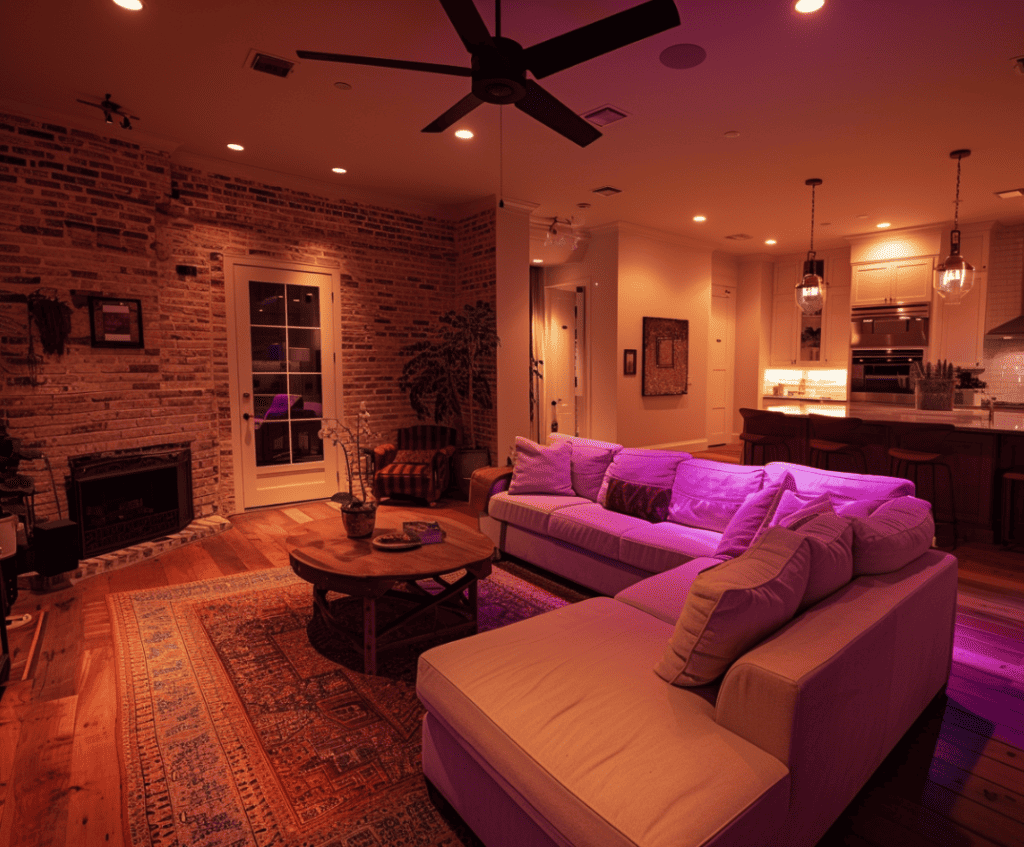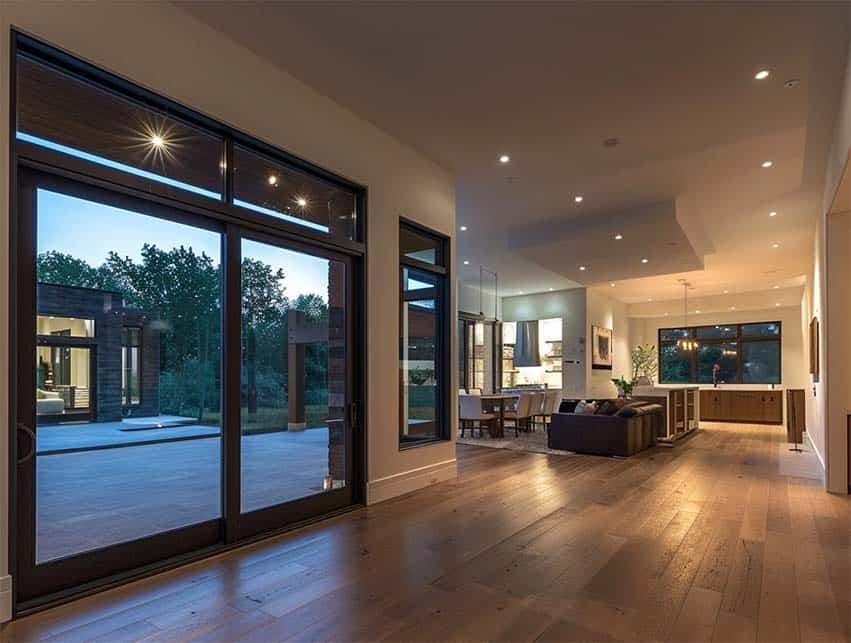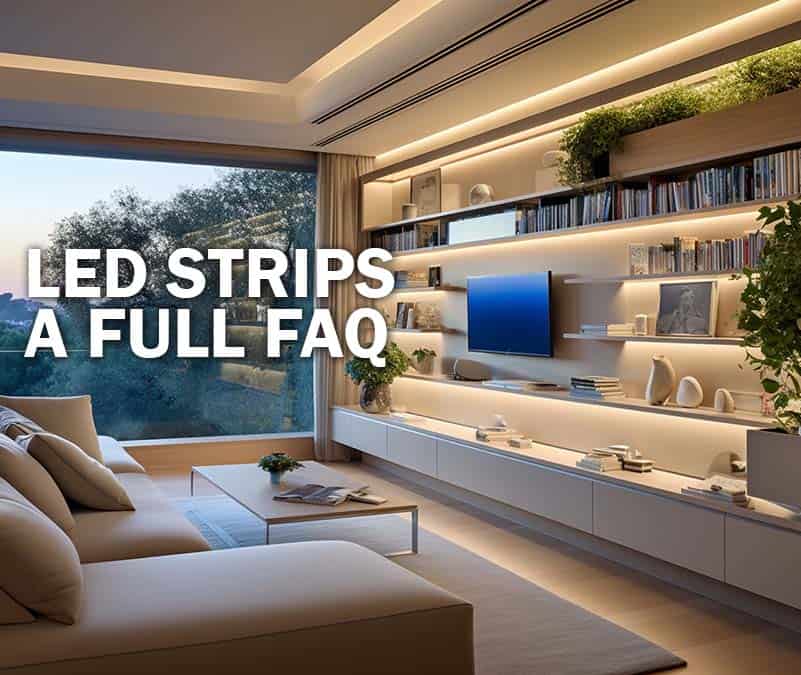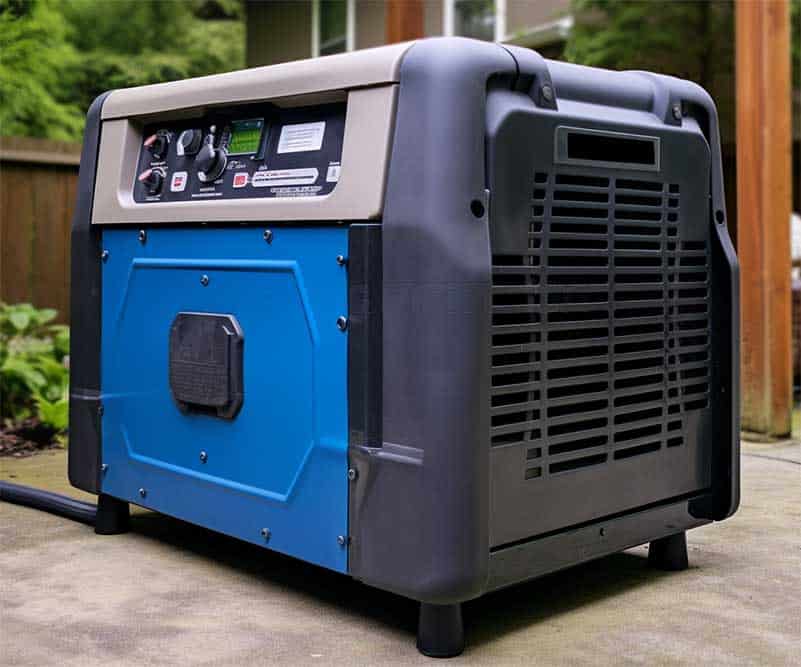Delamping: Stop Enriching Your Utility Company

Tired to work your butt off to pay ever-increasing utility bills? Time to delamp.
Switching to LED lighting might be the budget saving grace you’re looking for. Now, here is a funny term that has been coined to describe a for-real trend in interior design: Delamping. Delampwhat? Delamping, yes. Decreasing the number of light sources in your home to save on energy and money.
Come along with us, we’ll discuss what’s possible with delamping.
Key Takeaways
- Delamping is the process of intentionally removing excess light bulbs to save energy and costs.
- The switch to LED lighting in households is driven by its energy efficiency, cost savings, longer lifespan, as well as the desire to protect the environment.
- To delamp by switching to LED lighting, All Star Electric San Antonio needs to plan out how you want to illuminate your home.
What is Delamping?
Delamping is reducing the number of light fixtures (lamps, sconces, chandeliers, spots, etc.) used for illumination in a home, indoor and outdoor. It can also be done in an office or a retail space.
Why delamping? Primarily to optimize energy consumption, improve lighting efficiency, and reduce power bills (operating costs in a business).
By decreasing the number of light sources and switching to LED technology in the right places, your rooms and spaces can receive the same (or better) illumination levels with fewer fixtures.
In the end, you will spend less money, you will get the same or a better lighting, and you will contribute to preserving the environment for reasons we’ll describe here.

Why Switch to LED Lighting? A Real-Life Example
Here is a real-life comparison of efficiency and savings between a regular light bulb of 40 Watts and a LED “Edison” light of 5.5 Watts.

| LED | Incandescent Light | |
| Power (Watts) | 5.5 | 40 |
| Illumination (Lumens) | 500 | 280 |
| Cost of purchase (in $) | 5.70 | 0.94 |
| Estimated lifespan (in years) | 13.7 | 2.3 |
Other values used in our calculations:
Cost of 1 kW/h = $0.14
Annual inflation rate = 3%
Here are the reasons why switching from incandescent bulbs to LED lights make a whole lot of sense for your wallet. Just read the blue lines if you don’t want to bother with the calculation details.
Energy Efficiency
Based on the electric power consumed (5.5W vs. 40W) and the illumination produced (500 lumens vs. 280 lumens), the LED is 12.99 times more energy-efficient than the incandescent bulb.
Why? In traditional bulbs, the electrical current heats up a tungsten filament which emits lights as it gets hot. The metal transforms the energy of the current into heat which produces light. However, almost 90% of the energy generated by an incandescent bulb is released as heat, not light.
LEDs work on the phenomenon of electroluminescence. Electroluminescence occurs when certain materials emit light in response to an electric current. Essentially, when electricity is applied, it energizes the atoms in the material. These atoms then release energy as light, converting electrical energy directly into light energy. This process allows the material to glow without heating up, providing a bright and efficient light source.
Longer Lifespan
In our real-life comparison, the respective lifespans of the LED and the bulb are 13.7 years and 2.3 years. The LED has a lifespan 5.956 times longer than the light bulb.
Why? As the tungsten filament of the incandescent bulb heats up, the metal wears down to the point where it breaks. Additionally, the glass around the bulb is submitted to greater variations in temperatures, which makes the bulb more fragile. The factors explain the difference in longevity.
Our real-life example is very prudent. In fact, studies show LEDs can last up to 25 times longer than incandescent bulbs.
Cost of purchase
In our real-life example, the initial purchase cost of the LED light ($5.70) is higher than that of the bulb ($0.94). But in fact, considering the estimated lifetime of the bulbs, and the number of bulbs needed to achieve the same illumination as the LED, the cost of the bulbs comes to $11.22.
Here is the details of the calculation.
In our real-life example, the LED costs $5.70 today, the bulb costs $0.94. But this bulb only produces 280 lumens of light, vs. 500 lumens of the LED. So you would need about 2 of this light bulb (1.785 exactly) to achieve the same level of illumination of that LED.
Since you would have to replace these light bulbs 5.9 times during the lifespan of that LED, the cost of purchase of light bulbs over the 13.7-year lifespan of the LED would be about $10.
But the cost of light bulbs will increase over 13.7 years (inflation, remember?). Assuming that the increase is 3% per year, the total cost of the lights bulbs would come to $11.22.
And this is not assuming any cost of gas, going back and forth to the store 6 times to buy the bulbs!
Cost of electricity
In our real-life comparison, we calculated that your savings on electricity for a single LED light would amount to $277.32 over 13.7 years.
Here is the details.
The LED we used in our real-life example consumes 5.5 Watts of electrical power. The incandescent bulb we use as example consumes 40 Watts. We need 1.785 bulbs to get the same illumination (500 lumens) as with the LED.
Assuming the cost of electricity is $0.17 per kW/h, and you turn on your lights on average 4 hours per day, here is the difference in the total cost of energy of the 2 types of light sources, over 13.7 years:
- LED: $18.71
- Bulb: $296.03
- Savings: $277.32
That’s what you could save on your power bill just using 1 LED of 5.5 Watts instead of 2 incandescent bulbs of 40 Watts each.
We used very low values: 40 Watts for a light bulb, $0.17 kW/h for your electricity rate, 4 hours of usage per day. These are very low numbers. In the northern states, the rate for the kW/h is $0.22-$023. These rates will continue to rise.
There is an average of 40 light bulbs in every household in the U.S. Count the number of bulbs in your home, and do the math.
Question: Why would you give this money to the utility company?
Environmental Benefits of Delamping
If you are highly concerned with the impact of our electricity usage on the environment, you already know that adopting LED lighting contributes to reducing CO2 emissions.
But beyond our own electricity consumption inside our home, how else adopting LED lights help saving energy and other resources?

Natural resources
LEDs last longer. So using LEDs at home reduces the quantity of natural resources used to manufacture the lights.
Manufacturing
Manufacturing uses very large quantities of electrical power. The power plants used to produce electricity use large amounts of coal. Delamping makes a huge impact on our consumption of fossil fuels.
Freight Fuel
As LED lights last 6 to 25 times longer than bulbs, you don’t need to replace them as often. Think of all the fuel saved in transportation and logistics along the supply chain: maritime and truck transportation from a foreign factory to a local retail store, warehousing heating and lighting, gas used by people to go shopping at the DIY store…
There is always a possibility to reduce pollution worldwide and limit our waste of natural resources with small, individual gestures at home. Delamping is one of them.
Delamping: What Types of LED Lights?
There are different types of LED lights matching different applications: the two main categories in a residential context are indoor lighting and landscape lighting.
Outdoor and landscape lighting
Here are five different types:

LED Path Lights
Small posts with built-in LED lights used to illuminate walkways, paths, or driveways. Designed to provide ground-level illumination, they guide your steps and enhance the aesthetic appeal of your front or backyard.

LED Flood Lights
Powerful fixtures designed to cast a broad light beam. Used to illuminate large swaths of driveways and yards. Well adapted to security purposes, they usually come with motion sensors that enable homeowners to define a security perimeter around their home. Can also be installed at the main gate to increase the security perimeter.

LED Spotlights
Spotlights emit a narrower beam of light than floodlights, typically less than 45 degrees. Use them to highlight features such as trees, sculptures, architectural details, or garden spots. They create dramatic effects by highlighting particular points of interest in the landscape.

LED Deck Lights
Specifically designed for installation on decks, railings, or steps. They add a subtle, ambient lighting that illuminates tripping hazards and adds a warm, welcoming glow to outdoor living areas.

LED Bollard Lights
Sturdy, vertical posts with built-in LED lights that illuminate walkways, and in public settings, parking lots and pedestrian areas. Typically used to create a boundary of light along pathways or to define a specific area within a landscape, for instance the entrance of a dock or pontoon, or the staircase of a gazebo.
Indoor LED ligthing
Here are five types of LED lighting fixtures commonly used in interior design:

Recessed LED Downlights
We install them into hollow openings in the ceiling. They give a room a modern look. They come in focused or ambient lighting, and we find them in kitchens, living rooms, and hallways. They augment the volume of an area by illuminating walls and floors without visible fixtures.

LED Pendant Lights
Suspended from the ceiling, pendant lights are used over kitchen islands, dining tables, and other areas where focused lighting is needed. They serve both functional and decorative purposes and you can find them offered in many different styles.

LED Track Lighting
Multiple LED lights on a continuous track system: you can position individual lights anywhere along the track, and rotate them to highlight specific areas or fixtures. It’s a versatile option to spotlight artwork, accent walls, or working areas in kitchens.

LED Panel Lights
Large, rectangular lighting fixtures used mainly in commercial spaces. They are used more and more in modern, minimalist home interiors. They provide a uniform and broad light source. Their shape makes them an interesting indoor architectural focusing point. They can come with color-changing LEDs too.

LED Strip Lights
The rage of the past couple years. Flexible and adhesive, LED strip lights can be attached to various surfaces for decorative or accent lighting. Use them to highlight some architectural feature, or light up under-cabinet area in kitchens and bookshelves in a living room. You can also create ambient light behind TVs and mirrors. We use them very often in cove ceilings to create soft, indirect ambient lighting.
At All Star Electric San Antonio, we have installed a large number of LED lighting systems in the area, so we have seen many of the issues a home can create, and also many issues that unplanned delamping creates. LEDs are project directional light, not 360° lights like incandescent bulbs.
Planning your switch to LED lighting requires a bit of experience in placement of the lights, their height, the distance you install them from the objects you want to highlight, etc. LED are very bright, and it’s very easy to create “hot zones” where the light is too bright for comfort, and “dark zones” were there is not enough light to create a good balance of highlights and recessed areas. Call us at (210) 391-0274 for advice.
How Do We Perform Delamping?
Evaluating and Calculating

The first step consist in listening carefully to what you want to achieve, the areas you want to accent, those you want to recede. We need to understand how you want the ambient light plan in your various rooms, and where you want to create more intimate areas where to isolate and relax.
We will then start by assessing the current number of bulbs in use, considering factors like illumination requirements, desired brightness levels, and optimal quantity for efficient lighting performance. This is a good time to determine if you want dimmers on switches, and if you want color-changing LEDs.
Once we are done with this initial assessment, we evaluate the lighting needs of all spaces: we determine with you the type of activities and tasks that take place in any area, and your specific lighting preferences. To adjust the number of lights, we need to:
- Calculate the required brightness levels to ensure the area is adequately illuminated while minimizing energy consumption. LED technology gives you great control over both brightness levels and energy efficiency;
- Evaluate the quantity of bulbs needed to strike a balance between providing sufficient light output and avoiding over-illumination.
Selecting the Lights
The main concern we have when choosing LED lights in a delamping project is to achieve your goals in terms of energy efficiency. Opting for bulbs with high lumens per watt ratio reduces energy consumption while providing ample lighting. But they are not suitable everywhere.
We also need to ensure compatibility with existing fixtures to avoid installation incompatibilities that may arise. Dimmers, for instance, don’t necessarily match all types of LEDs.
Part of the process consist in selecting lights that have the desired color temperature, brightness, and beam angle.
Replacing and testing
Then comes the time to replace your old bulbs, set up any new fixtures on your walls and ceilings, change recessed cans, install strip lights, etc.
Once a room is done, we test. Testing functionality first, to make sure all switches and dimmers work, and that any color-change can be done with a phone app or a remote control. We then test with you, to make sure everything is to your taste, as you planned it with us originally.

Why Choose All Star Electric to Help You With your Delamping Project?
It’s difficult to find knowledgeable craftsmen with a excellent worth ethics these days. Our team of licensed electricians has been operating in San Antonio for almost 30 years. For you, this is a guarantee that we are not a fly-by-night electrical contractor, and that we have the experience you need for your project.
Since we became members of the San Antonio BBB in 2016, we have maintained our A+ rating with no complaint to our name. We also have great reviews in Google, with a great star rating of 4.5.
Call us at (210) 391-0274 for a first consultation. This is not a commitment: it is a first contact during which we will listen to your project, and give you specific pointers to help you narrow the scope and the budget. If you request it, we will give you an estimate and a timeline.
Additional Resources
Switching to LED Lighting
Electrical remodeling




























